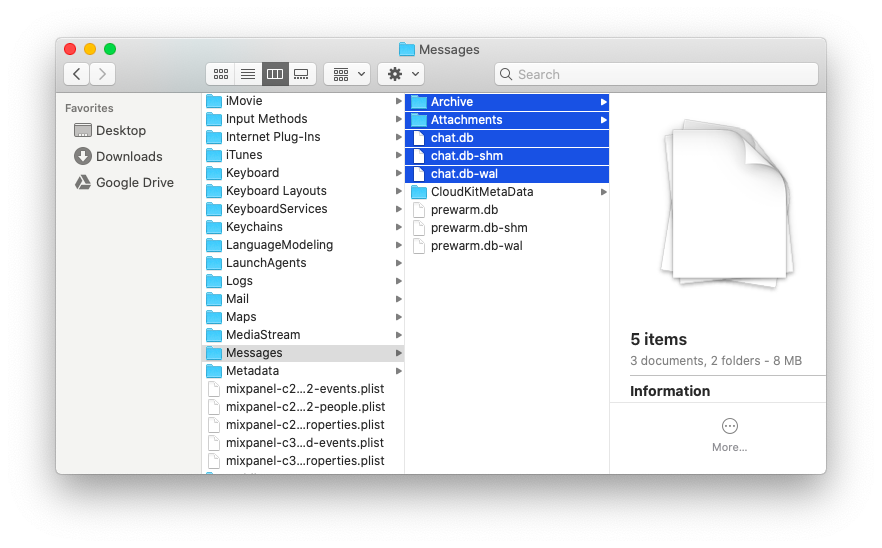

- #Find chat logs on mac for second life mac os x
- #Find chat logs on mac for second life software
- #Find chat logs on mac for second life password
- #Find chat logs on mac for second life free
- #Find chat logs on mac for second life windows
So, I just wanted to share that! Maybe you're now saying "Oh, yay, now I can remember that thing my friend told me that I've been racking my brains about!" or "Oh good, I want to revisit that memory" or perhaps "Oh my god, I have to get this stuff off my computer before my visiting aunt Ruby finds it!!!" Or maybe you already knew. First, the MAC length is at most 64 bit, that is an attacker could try to brute-force-find a valid MAC with 'merely' 2 64 submissions, which is border-line feasible for large companies today. It seems less than ideally private, frankly.
#Find chat logs on mac for second life windows
On my Windows computer, I just had to go to the logical location, which is C:\Documents and Settings\\Application Data\SecondLife (I'm sorry, but I have no idea at all what that might translate to in Mac-ese).and what did I find there? Why, a folder called kate_amdahl (along with one for my worker alt and another for a friend who has used Second Life on this computer), and inside it, a plain text file for every person I've IMed with on that computer since the feature was implemented in early August, containing the complete text of all IMs since that time.ĭid you already know about this? I didn't really realize.

website history, GPS locations, Geo-fencing, surroundings, and social chat logs on. Rediscover the fun of mah-jongg on your Mac.
#Find chat logs on mac for second life software
Yesterday I began to wonder exactly how much was actually saved of those IMs, and in what form, and went looking. Remote cell phone hacking software allows you complete access to all. Travel, explore, make friends, and socialize, for status and wealth in a 3D online world.
#Find chat logs on mac for second life password
Use a valid email and password to log into your account.
#Find chat logs on mac for second life free
Life: login, stay online, contact your friends using IMs and local chat. This is limited promo so hurry up and grab your chance to get unlimited free Robux that you can. :) At a certain point I noticed that it didn't save those conversations across computers.if I IMed someone from a different computer later on, it wouldn't show the IM log, which demonstrated to me that the IMs were being saved on the local computer. Get SpeedLight Gold + essential Second Life features: IMs, friends, chats. This means you can browse to them in Finder or via the Terminal, open them in other applications, use command-line tools with them, and back up the files.KateamdahlA software version or two ago, I noticed that the Second Life client had started saying it was logging IMs, which is very handy! Whenever I pop up a new conversation with someone, it shows what the last thing was that we talked about. paying for parties and furniture and in their leisure time, they chat with. So, all you have to do is locate the chat log file in that folder and eitherr delete it or empty it. See MICHAEL RYMAszESWKI ET AL., SECOND LIFE: THE OFFICIAL GUIDE 5-6, 11. Enter /Library/Application Support/SecondLife and click OK.
#Find chat logs on mac for second life mac os x
To get here: In the Mac OS X Finder, choose Go menu > Go to Folder. These logs are plain-text files you can find on your Mac’s local disk, too. If you're on a Mac: The folder is located at /Library/Application Support/SecondLife. Click File > Save to save your text file afterwards. Next, open the TextEdit application-for example, by pressing Command+Space, typing “TextEdit,” and pressing “Enter.” Create a new document and then select Edit > Paste to paste the messages into the text file. Next, click Edit > Copy to copy them to your clipboard. First, click Edit > Select All to select all the messages on the current screen.

You can copy data from your system logs to a text file, if you need to export it to share it with someone else for troubleshooting purposes. To view another Mac user account’s logs located under “User Reports” or “~/Library/Logs,” you’ll have to sign in as that user and then open the Console app. “~Library/Logs” is your current Mac user account’s user-specific application log folder, “/Library/Logs” is the system-wide application log folder, and “/var/log” generally contains logs for low-level system services. The search bar works to filter these log files, too. To view the system log file, click “system.log.” To browse different application-specific logs, look through the other folders here. An application’s developer may need this information to fix a crash that occurs on your Mac, too.

If you need more information about why an application crashes on your system, you may be able to find it here.


 0 kommentar(er)
0 kommentar(er)
